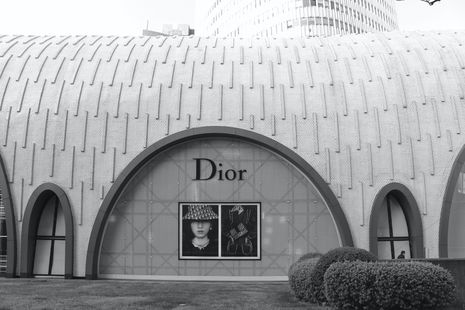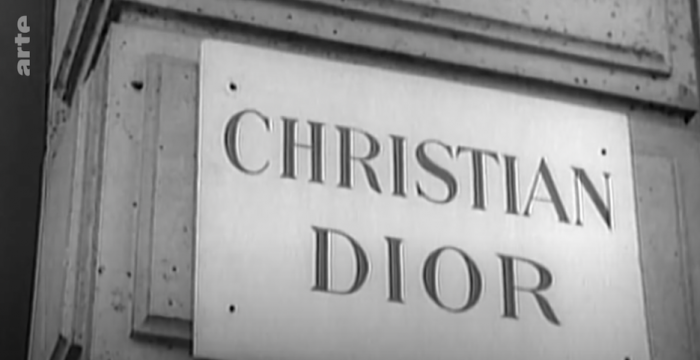Has Dior had its day?
Fashion Editor
Kasia Truscott examines the divisive changes made by Maria Grazia Chiuri to the face of the French fashion house
 By Kasia Truscott / Friday June 3 2022, 9:00am
By Kasia Truscott / Friday June 3 2022, 9:00am
We shall begin on a more positive note, with the latest release of Dior’s
Resort 2023 menswear collection. The collaboration between creative director for Dior Hommes, Kim Jones, and Eli Russel Linnetz signed on as Dior’s latest guest designer, was nothing short of a match made in heaven. A sophisticated yet quirky colour palette of dove grey and eclectic pastels sauntered down an ocean-themed runway, elevating the elusive coolness of silk satin suits, wide-legged puddle pants and baggy skater shorts, winking flirtatiously with subtle beaded details. Linnetz and Jones captured the perfect balance between Dior’s classic Parisian sophistication and the experimental playfulness that you’d expect from a resort collection. I was, in short, beyond impressed. Sadly, however, I simply cannot say the same for Maria Grazia Chiuri and Dior womenswear.
“Not only has Chiuri failed to re-empower the Dior woman, but she has lost her essence completely”
I have always loved Kim Jones’ work for Dior Homme, and I am not ashamed to say that I do not feel the same way about Maria Chiuri. Since being appointed as creative director in 2016, Chiuri has been vocal about the political charge of her vision for the maison, articulating her aspirations to revolutionise the image of the Dior woman and free her from the shackles of the patriarchy. To an extent, I understand. As Dior’s first ever female creative director, Chiuri comes after a long line of prolific male designers (notably Yves Saint Laurent and Raf Simons), who were widely celebrated for their experimentation with the feminine charm of the Dior woman.
Yet all of Chiuri’s predecessors also worked within the framework of a fashion industry built on gendered norms that perpetuated ideas about expressions of femininity being confined to delicacy: namely in the form of ball skirts and tulle. Now, I don’t doubt that Chiuri had a lot to live up to when she stepped into the role, and indeed a lot to change. But I cannot help but feel as though she has executed her vision for the brand extremely poorly. Not only has Chiuri failed to re-empower the Dior woman, but she has lost her essence completely, transforming the maison into a dull shadow of its former self.
Traditionally, the Dior woman is all about class and sophistication. When Christian Dior first unveiled his revolutionary
‘New Look’ collection in 1947, he ushered in a new age of cinched waists, elevated busts and ankle-length skirts designed to accentuate unique aspects of the female body. While I can see how Chiuri is keen to rewrite this aspect of Dior’s history that has relied so heavily on the objectification of the female body, it’s also clear to see how Chiuri’s predecessors, even through generations of reinvention, have continued to honour the essence of elegance that remains central to the maison’s image. Chiuri’s Dior, however, does not feel elegant.
Now, I don’t believe that the only way to express elegance is through fetishizing femininity. I do believe, however, that Chiuri has totally ignored Dior’s legacy of elegance. Instead of honouring Dior’s DNA, looking to work with it instead of against it, Chiuri has failed to stand out as anything remarkable because she hasn’t tried to combine her own style with the integral essence of the maison. In short, I think Chiuri’s Dior is painfully boring.
I was especially disappointed by her
Fall 2022 ready-to-wear collection, which saw a genuinely confusing mix of wired silhouettes, black chiffon dresses and football shoulder pads. Modernising the Dior woman isn’t achieved by shoving plastic on an evening dress. Nor is it achieved by a series of so-called ‘feminist’ slogan tees, like ‘Sisterhood Global’ and ‘Sisterhood Is Powerful,’ as exhibited by her lack-lustre
Fall/Winter 2019 collection.
It’s not Chiuri’s creative vision that I have a problem with; it’s her execution. Chiuri’s feminism feels performative, like an excuse for her artistic mediocrity. Nothing Chiuri has produced for Dior feels like a genuine effort to achieve something groundbreaking, with many of her collections simply riding off the back of silhouettes and patterns pioneered by her predecessors, with a slogan tee thrown in for the sake of being ‘modern’. Chiuri’s efforts to rewrite Dior’s history have made redundant what she has claimed to be her mission in the first place. At best, her dreams of modernising the Dior woman feel agonisingly empty.
And yet, Chiuri’s Dior still sells. Last year, the maison
doubled its operating profits, which only brought me further disappointment. Chiuri’s lack of creativity feels like glorified fast fashion; luxury brands like Dior should be setting trends, not ripping them off, treating female empowerment like an accessory. What I once found beautiful and innovative about Dior I simply cannot find under Maria Chiuri. You can rewrite history without destroying the essence of the brand you are trying to revolutionise; I don’t believe Chiuri has worked out how to achieve that balance just yet. Six years down the line, I am yet to be convinced otherwise, but for now, I will mourn the essence of what Dior used to be, and can only hope that the days of the overpriced ‘feminist’ slogan tee are far behind us.



